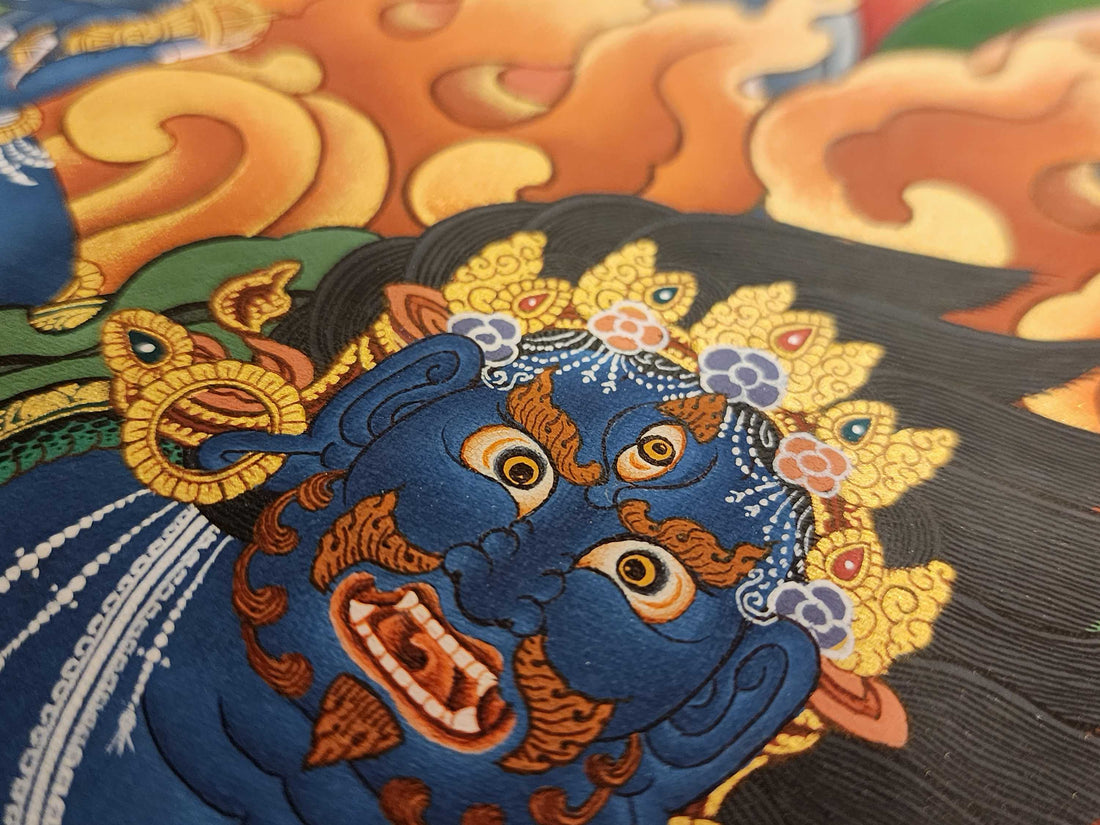
Hand-Painted vs. Printed Thangkas: How to Identify Authentic Tibetan Art
Share
Introduction
As Thangkas become more popular around the world, buyers often face one key question: Is it hand-painted or printed? While printed Thangkas are more affordable, hand-painted ones carry spiritual and artistic value that makes them true cultural treasures. Here’s how to tell them apart and why it matters.
Surface Texture
— Hand-Painted: Brush strokes, slight texture, and variations in color are visible upon close inspection.
— Printed: The surface feels flat, with a uniform finish and no paint texture.
Detailing and Precision
— Hand-Painted: Fine lines and shading are intricate, with subtle depth and richness in colors.
— Printed: Details may look pixelated or overly uniform, especially under magnification.
Material Quality
— Hand-Painted: Often made on high-quality cotton or silk with natural pigments and gold accents.
— Printed: Usually printed on synthetic fabrics or low-cost canvas with chemical inks.
4. Price and Value
— Hand-Painted: Higher cost due to skilled labor, natural pigments, and spiritual significance. Appreciates in value over time.
— Printed: Affordable, good for casual display, but holds little to no collectible value.
Spiritual Significance
Hand-painted Thangkas are often consecrated and blessed, making them sacred tools for meditation and rituals. Printed versions, while visually appealing, are not usually treated as spiritual objects.
Why Authenticity Matters
Investing in a hand-painted Thangka supports traditional artisans and preserves centuries-old Himalayan culture. It also ensures that the piece carries the spiritual energy and authenticity collectors and practitioners seek.
Conclusion
Whether you choose a hand-painted Thangka for its spiritual value or a printed one for its affordability, knowing the difference helps you make an informed choice. Authentic art is more than decoration. It is a piece of living Buddhist tradition.
